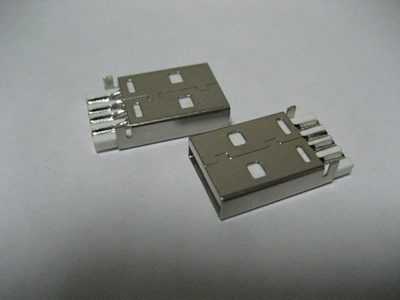Metal mold faces a new round of opportunities
 As more multinational corporations expand their presence in China, local hardware companies are facing increasing pressure. Especially for growing mold enterprises, it's crucial to stay focused and seize strategic opportunities for development. Setting clear, realistic goals is essential. If they don’t move upstream, they risk being left behind. While profit maximization, customer value creation, and employee benefits are all important, the ultimate goal for any company should be to deliver long-term value.
The precision required in metal molds is constantly rising. A decade ago, 5-micrometer accuracy was considered high, but today, it’s already down to 2-3 micrometers. Soon, 1-micrometer molds will hit the market, pushing the industry toward superfinishing techniques. The metal processing mold sector is also expanding due to the demand for multi-cavity molds that increase production efficiency. Multi-functional composite molds are becoming more advanced, not only punching and forming parts but also performing tasks like lamination, tapping, riveting, and locking. This means higher demands on material quality and performance.
How can Chinese metal mold companies thrive in this competitive environment? The evolution of the socialist market economy is a process of rapid circulation. Understanding this flow is key to grasping the dynamics of the market. Modern circulation plays a vital role in enhancing economic efficiency, quality, and effectiveness. To ensure continued growth in the hardware manufacturing industry, several key areas must be addressed.
First, the metal mold industry needs to develop modern service systems, build large-scale businesses, and establish efficient circulation platforms. This will help replace the current fragmented and weak distribution networks. Second, every stage of the industry’s development should be optimized. By leveraging regional hardware resources, clusters can be formed, industrial chains extended, and a complementary production model created to boost overall competitiveness.
Technological innovation and brand building are also critical. Companies should accelerate the integration of domestic and international trade, as well as the fusion of trade and industry, driving structural changes and more sustainable growth. Focusing on market expansion and consumer demand, e-commerce and digital platforms should be fully utilized to modernize logistics, monitoring, and credit systems within the hardware sector.
Finally, fostering industry collaboration and resource sharing is essential. Hardware businesses must recognize the importance of collective effort, pool resources, and enhance communication both internally and externally. This will lead to greater synergy, drive industry-wide prosperity, and better prepare them for global challenges, including potential trade barriers and intense international competition.
As more multinational corporations expand their presence in China, local hardware companies are facing increasing pressure. Especially for growing mold enterprises, it's crucial to stay focused and seize strategic opportunities for development. Setting clear, realistic goals is essential. If they don’t move upstream, they risk being left behind. While profit maximization, customer value creation, and employee benefits are all important, the ultimate goal for any company should be to deliver long-term value.
The precision required in metal molds is constantly rising. A decade ago, 5-micrometer accuracy was considered high, but today, it’s already down to 2-3 micrometers. Soon, 1-micrometer molds will hit the market, pushing the industry toward superfinishing techniques. The metal processing mold sector is also expanding due to the demand for multi-cavity molds that increase production efficiency. Multi-functional composite molds are becoming more advanced, not only punching and forming parts but also performing tasks like lamination, tapping, riveting, and locking. This means higher demands on material quality and performance.
How can Chinese metal mold companies thrive in this competitive environment? The evolution of the socialist market economy is a process of rapid circulation. Understanding this flow is key to grasping the dynamics of the market. Modern circulation plays a vital role in enhancing economic efficiency, quality, and effectiveness. To ensure continued growth in the hardware manufacturing industry, several key areas must be addressed.
First, the metal mold industry needs to develop modern service systems, build large-scale businesses, and establish efficient circulation platforms. This will help replace the current fragmented and weak distribution networks. Second, every stage of the industry’s development should be optimized. By leveraging regional hardware resources, clusters can be formed, industrial chains extended, and a complementary production model created to boost overall competitiveness.
Technological innovation and brand building are also critical. Companies should accelerate the integration of domestic and international trade, as well as the fusion of trade and industry, driving structural changes and more sustainable growth. Focusing on market expansion and consumer demand, e-commerce and digital platforms should be fully utilized to modernize logistics, monitoring, and credit systems within the hardware sector.
Finally, fostering industry collaboration and resource sharing is essential. Hardware businesses must recognize the importance of collective effort, pool resources, and enhance communication both internally and externally. This will lead to greater synergy, drive industry-wide prosperity, and better prepare them for global challenges, including potential trade barriers and intense international competition.Power Line And Cable Testing Instrument
Power Line And Cable Testing Instrument,Power Cord Connections Testing Instrument,Misinsertion and Contact Sequence Testing Instrument,Appliances Power Cord Testing Instrument
Guangdong Yuwei Testing instrument Co., Ltd , http://www.yuweiinstrument.com